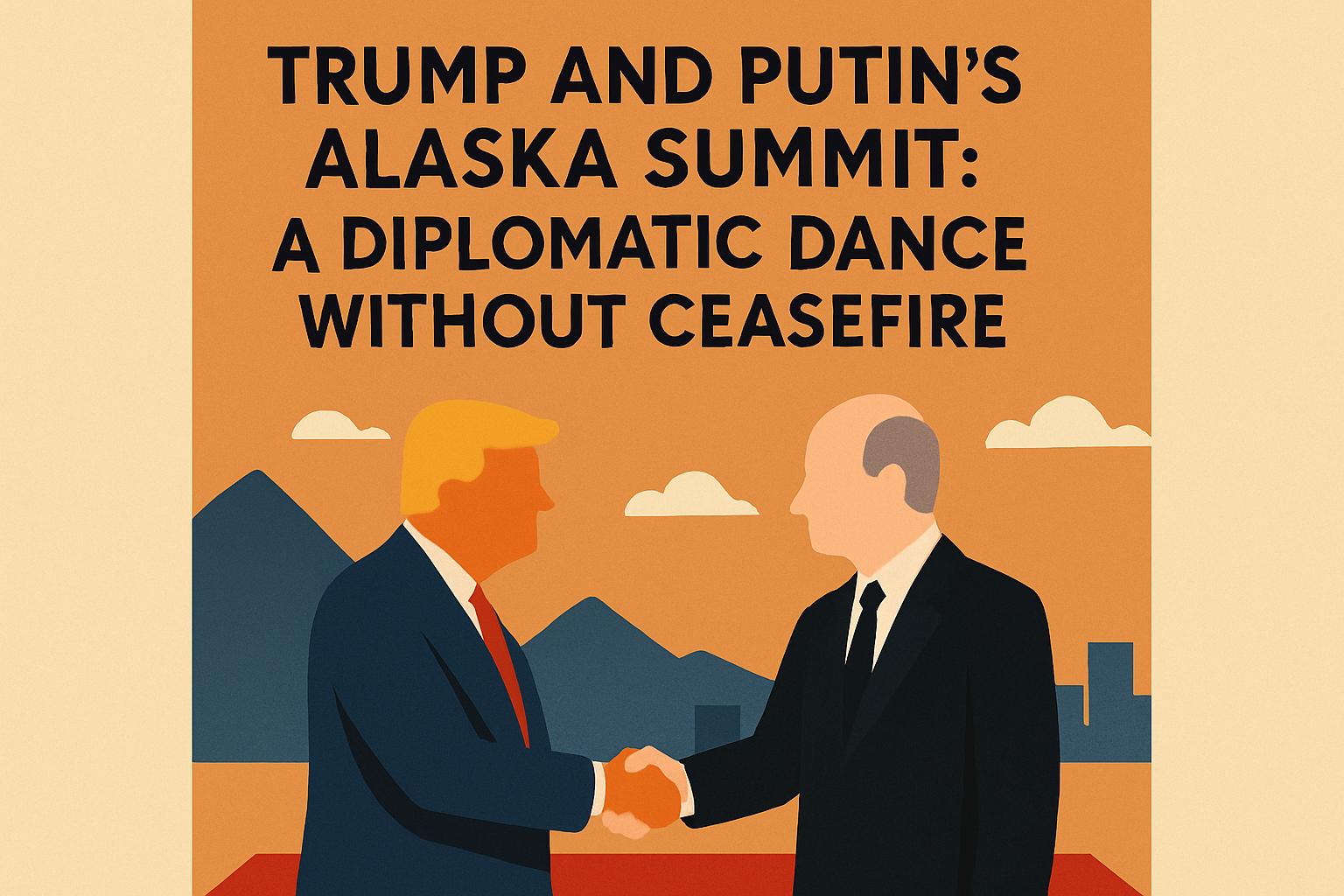Under the shadow of the Alaska skyline, a meeting of significant geopolitical weight occurred, bringing together American President Trump and Russian President Putin for a closed-door discussion on one of the world’s most pressing conflicts—Ukraine. Although the meeting, lasting nearly three hours, was declared ‘productive,’ it yielded no ceasefire agreement, leaving the quest for peace suspended in a tense diplomatic balance.
Left Without Agreement: Silence Follows Alaska Talks
Against the backdrop of the Anchorage Air Base, Trump and Putin faced the stalwart press, bearing no new accords to reveal. Trump’s words, though hopeful, painted an incomplete picture: “We reached consensus on many fronts, yet crucial concerns remain unaddressed. Thus, a true agreement is still out of reach.” Putin’s guarded statements implied a cautious optimism, urging respect for the summit’s outcomes while warning against actions that might deter progress.
Ukraine Excluded: A Delicate Diplomatic Stance
Curiously absent from the summit was Ukrainian President Zelensky. His uninvited presence sparked worries among Ukraine and its European allies, fearing the meeting might solidify territorial concessions to Russia. However, Trump was quick to clarify his role, stating, “I am not here to decide for Ukraine, but to open avenues for dialogue—facilitating negotiations is my goal.” This stance, however clear, left the initiative for peace hanging precariously.
Zelensky’s Response: Urging Russia to Lead Peace
From afar, Zelensky responded with a call for a fair peace, advocating for a trilateral discussion. Yet, his words were shadowed by continued Russian aggression; on the very day of the summit, a Russian ballistic missile struck eastern Ukraine, underscoring the urgency and complexity of peace efforts. As Zelensky articulated his nation’s reliance on American support, the call for cessation grew louder.
Symbolism Over Substance: Putin’s Bid to Break Isolation
While many agreements remain out of reach, the summit’s symbolic power cannot be understated for Putin. Amid ongoing Western efforts to isolate Russia, his presence in Alaska epitomized a bold statement of Moscow’s desire to remain a power engaged in global discourse. The symbolic gestures—a handshake on the red carpet and shared transport to the summit site—reinforce a narrative of peace, even if tangible progress remains elusive.
Expectations Versus Reality: Casting Doubts on Peace
The summit featured high-level diplomats from both the United States and Russia, with discussions described as complex and challenging. While Trump once boasted of resolving the war within a day, he now acknowledged its intricacy far exceeds prior assumptions.
Human Cost Continues: The Bleak Reality of War
War’s human toll looms large; U.S. estimates suggest up to 1.2 million casualties among combatants, with civilian deaths numbering in the thousands. As Trump parleys with allies from NATO and Ukraine, questions about the viability of a lasting ceasefire persist. For Trump, a successful peace could reshape his image into that of a peacemaker, a legacy perhaps even worthy of Nobel consideration.
Whether the Alaska summit paves the way for future agreements or remains a diplomatic footnote, it has undeniably opened channels for further dialogue. The pursuit of peace continues to dance on the edge of possibility, spurred by the aim to end this harsh chapter in global history.

![[News] Bitcoin at a Turning Point? 10x Research Signals a Bullish Macro Shift Ahead](https://cryptoexplores.com/wp-content/uploads/2025/06/new20250616.jpg)
![[News] Binance Lists $HOME, the Gas-Free, Bridge-Free All-in-One DeFi App](https://cryptoexplores.com/wp-content/uploads/2025/06/news20250617.jpg)